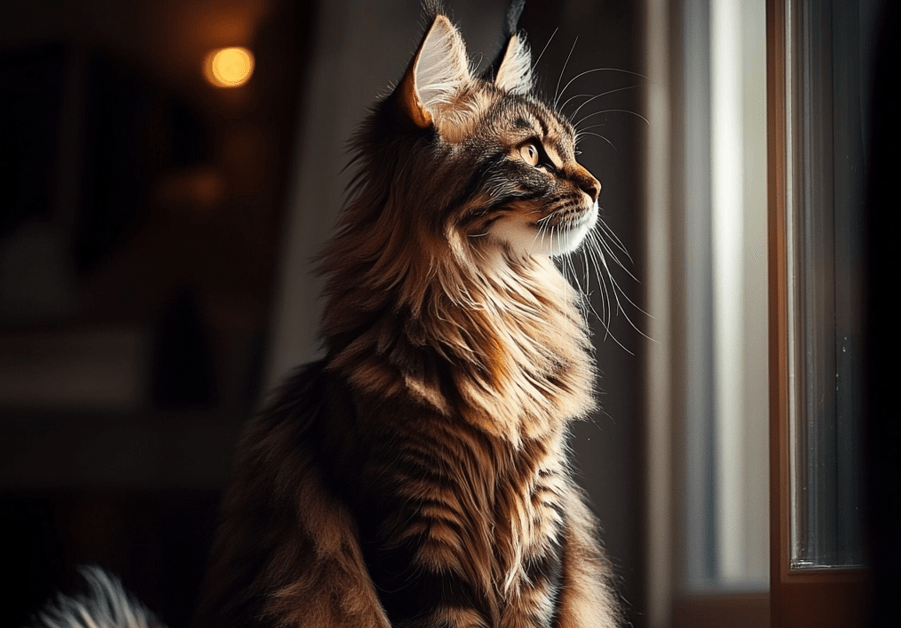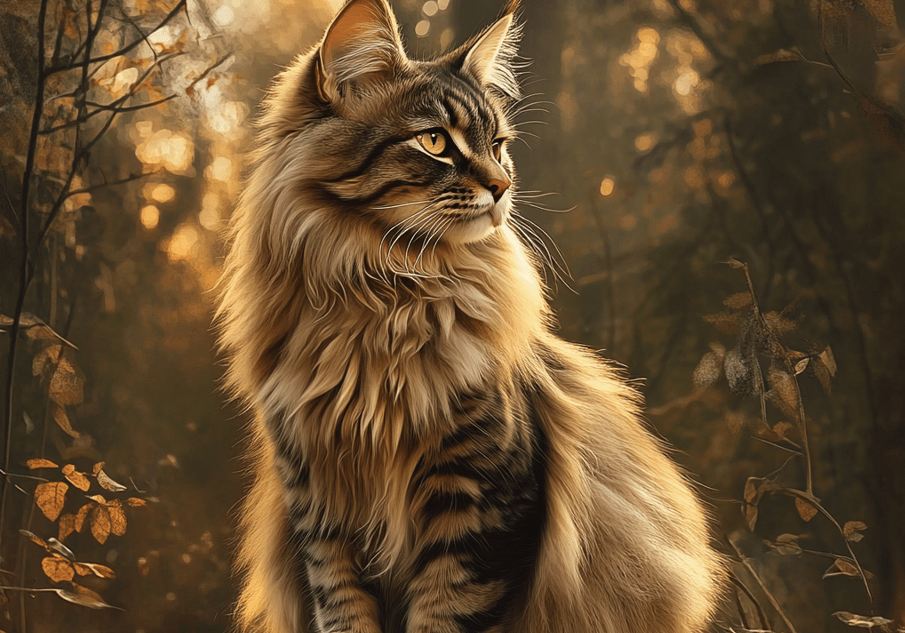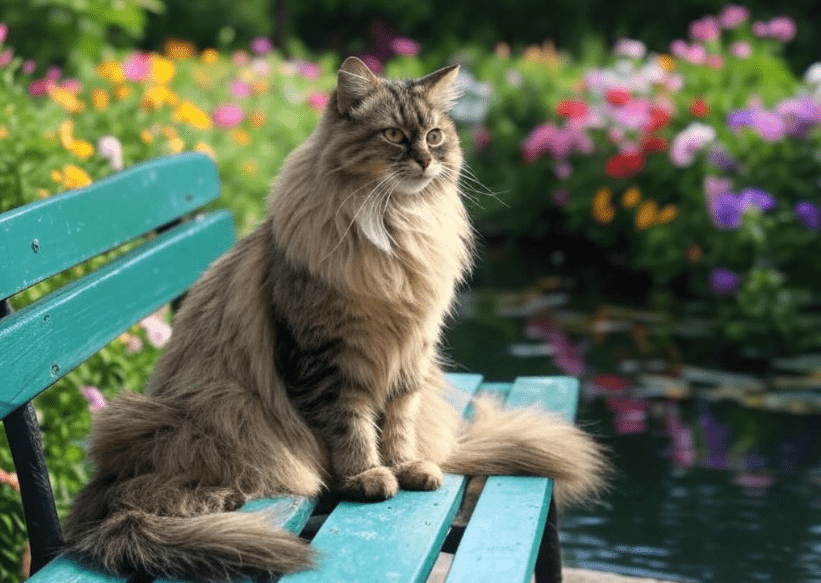
Maine Coon cats, known for their majestic size, friendly personalities, and luxurious long fur, are a beloved breed among cat enthusiasts. Their thick, water-repellent coats are a hallmark of their beauty, but they require diligent care to remain mat-free. Mats in a Maine Coon’s fur can lead to discomfort, skin issues, and even infections if left untreated. This comprehensive guide will walk you through everything you need to know to keep your Maine Coon’s long fur mat-free, ensuring their coat stays healthy, shiny, and tangle-free.
Whether you’re a new Maine Coon owner or a seasoned caregiver, this article provides practical tips, expert advice, and step-by-step grooming techniques to maintain your cat’s stunning coat. From choosing the right tools to establishing a grooming routine, we’ll cover all aspects of Maine Coon fur care with a focus on preventing and managing mats.
Understanding the Maine Coon’s Long Fur
Maine Coon cats have a distinctive coat that sets them apart from other breeds. Their fur is medium-long, with a silky texture and a water-repellent quality that helped their ancestors thrive in harsh New England winters. The coat consists of three layers:
Guard Hairs: The outer layer, which is long, coarse, and protects against moisture and debris.
Awn Hairs: The middle layer, providing insulation and thickness.
Undercoat: The soft, dense layer closest to the skin, keeping the cat warm.
This multi-layered coat is prone to matting, especially in areas with high friction, such as under the legs, behind the ears, and around the tail. Mats occur when loose fur, dirt, or oils tangle together, forming clumps that can tighten and pull on the skin. Regular grooming is essential to prevent these issues and maintain your Maine Coon’s coat in top condition.
Why Mats Are a Problem for Maine Coons
Mats are more than just a cosmetic issue. If left untreated, they can cause:
Discomfort and Pain: Mats pull on the skin, causing irritation or soreness.
Skin Infections: Trapped moisture and debris under mats can lead to bacterial or fungal infections.
Reduced Mobility: Large mats in areas like the legs or belly can restrict movement.
Grooming Challenges: Mats make grooming more difficult and stressful for both you and your cat.
By prioritizing mat prevention, you can ensure your Maine Coon remains comfortable and healthy while preserving the beauty of their long fur.
Step-by-Step Guide to Keeping Your Maine Coon’s Fur Mat-Free
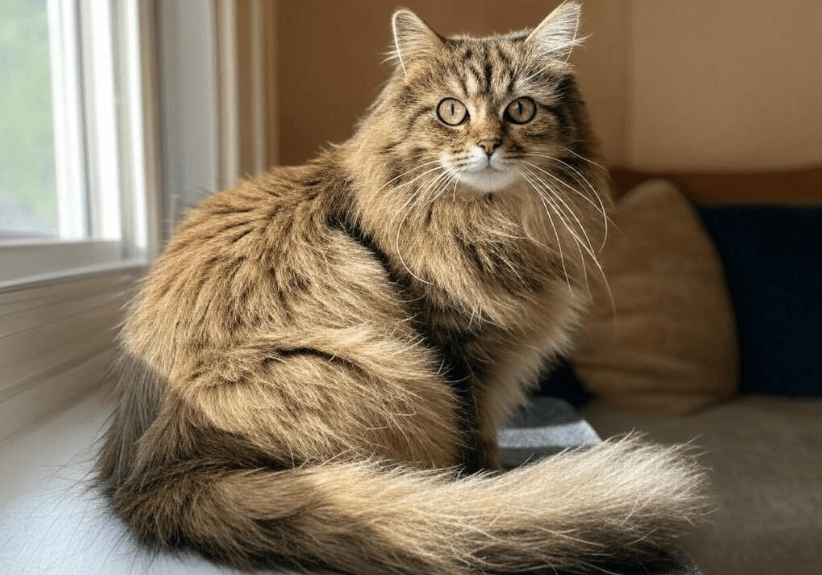
1. Establish a Regular Grooming Routine
Consistency is key to preventing mats in your Maine Coon’s fur. Aim to groom your cat at least 2–3 times per week, with more frequent sessions during shedding seasons (spring and fall). A regular grooming routine removes loose fur, distributes natural oils, and prevents tangles from forming.
Tips for a Successful Grooming Routine:
Start Early: Introduce grooming to kittens to build positive associations.
Choose a Calm Environment: Groom in a quiet, comfortable space to reduce stress.
Use Treats and Praise: Reward your Maine Coon to make grooming a pleasant experience.
Keep Sessions Short: Aim for 10–15 minutes per session to avoid overwhelming your cat.
2. Invest in the Right Grooming Tools
Using the appropriate tools makes a significant difference in maintaining a mat-free coat. Here’s a list of must-have grooming tools for Maine Coon owners:
Wide-Tooth Comb: Ideal for detangling and working through thick fur without pulling. Look for a comb with rounded teeth to avoid scratching the skin.
Slicker Brush: Perfect for removing loose fur and smoothing the coat. Choose one with soft, flexible pins.
Dematting Comb: Designed to gently cut through small mats without harming the surrounding fur.
Undercoat Rake: Helps remove loose undercoat fur, especially during shedding season.
Grooming Gloves: Useful for cats who dislike brushes, as they mimic petting while removing loose fur.
Scissors (Optional): Use blunt-tipped grooming scissors for trimming small mats, but only if you’re confident and careful.
Pro Tip: Avoid using human hairbrushes or sharp tools, as they can damage your cat’s fur or skin.
3. Master the Grooming Process
Follow these steps to groom your Maine Coon effectively:
Step 1: Prepare Your Cat
-
Gently pet your cat to relax them and check for any sensitive areas or existing mats.
-
Place them on a non-slip surface, like a towel or grooming mat.
Step 2: Start with a Wide-Tooth Comb
-
Begin at the head and work toward the tail, combing in the direction of hair growth.
-
Focus on high-risk areas like the belly, armpits, and base of the tail.
-
Use short, gentle strokes to avoid pulling the fur.
Step 3: Use a Slicker Brush
-
Brush the entire coat to remove loose fur and smooth the surface.
-
Pay attention to the ruff (the mane-like fur around the neck) and the tail, which are prone to tangles.
Step 4: Check for Mats
-
Run your fingers through the fur to feel for any clumps or tangles.
-
If you find a small mat, use a dematting comb to gently tease it apart. Hold the fur near the skin to minimize discomfort.
Step 5: Finish with a Final Comb
-
Comb through the coat one last time to ensure it’s smooth and tangle-free.
-
Check the ears, paws, and sanitary areas for any debris or matting.
Note: If your cat becomes stressed, take a break and resume later. Never force grooming, as it can create negative associations.
4. Address Mats Promptly
If you discover a mat, address it immediately to prevent it from worsening. Here’s how to handle mats safely:
Small Mats: Use a dematting comb to gently separate the mat, working from the edges inward. Apply a cat-safe detangling spray to loosen the fur if needed.
Large or Tight Mats: If the mat is too dense to comb out, carefully trim it with blunt-tipped scissors. Hold the skin taut to avoid nicks, and trim only the matted fur.
Severe Mats: For mats close to the skin or in sensitive areas, consult a professional groomer or veterinarian to avoid injury.
Warning: Never pull or tug on mats, as this can cause pain and damage the skin.
5. Bathe Your Maine Coon (When Necessary)
While Maine Coons don’t require frequent baths, occasional bathing can help keep their fur clean and reduce matting. Use a cat-specific shampoo and follow these steps:
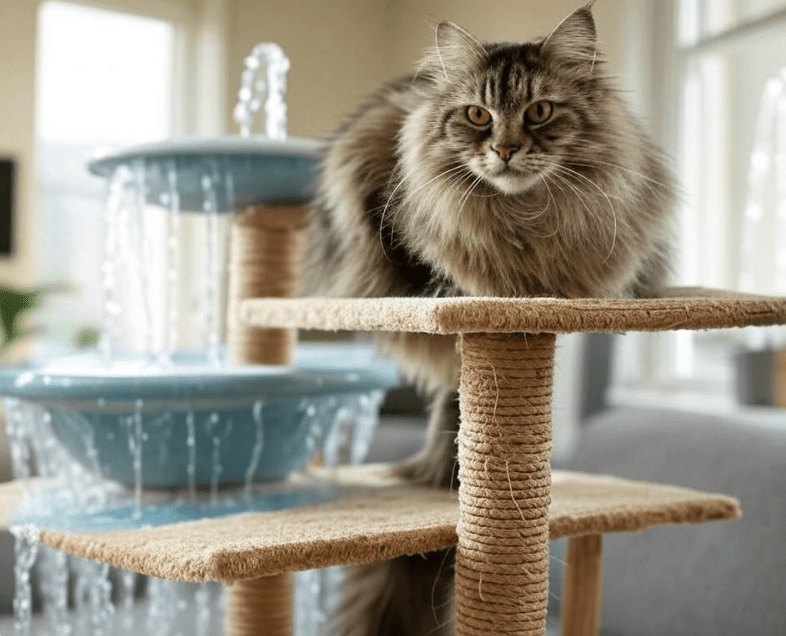
Prepare the Bath: Fill a sink or tub with lukewarm water and place a non-slip mat at the bottom.
Wet the Fur: Use a handheld sprayer or cup to gently wet the coat, avoiding the face.
Apply Shampoo: Massage a small amount of shampoo into the fur, focusing on oily or matted areas.
Rinse Thoroughly: Ensure all shampoo is rinsed out to prevent irritation.
Dry the Coat: Towel-dry your cat and use a low-heat blow dryer if they tolerate it. Brush the fur while drying to prevent new mats.
Frequency: Bathe your Maine Coon every 4–6 weeks or as needed, depending on their lifestyle and coat condition.
6. Maintain a Healthy Diet
A balanced diet plays a crucial role in keeping your Maine Coon’s fur healthy and mat-free. Nutrients like omega-3 fatty acids, biotin, and zinc promote a shiny, strong coat that’s less prone to tangles.
Diet Tips:
-
Choose high-quality cat food with real meat as the primary ingredient.
-
Look for foods enriched with omega-3s (from fish oil or flaxseed) to support skin and coat health.
-
Ensure your cat stays hydrated to prevent dry skin, which can lead to matting.
-
Consult your veterinarian about supplements if your cat’s coat appears dull or prone to tangles.
7. Monitor for Skin and Coat Issues
Regularly check your Maine Coon’s skin and coat for signs of problems that could contribute to matting, such as:
Dry Skin: Can cause flaking and increase tangling.
Allergies: May lead to excessive scratching, which mats the fur.
Parasites: Fleas or mites can cause irritation and matting in affected areas.
Medical Conditions: Hormonal imbalances or skin infections can affect coat quality.
If you notice excessive matting, bald patches, or skin changes, consult a veterinarian to rule out underlying health issues.
Seasonal Grooming Tips for Maine Coons
Maine Coons shed more heavily in spring and fall as they transition between their winter and summer coats. During these periods, increase grooming frequency to prevent mats caused by loose fur.
Spring Shedding:
-
Use an undercoat rake to remove thick winter undercoat.
-
Brush daily to manage increased shedding.
Fall Shedding:
-
Focus on removing loose summer fur to prepare for the denser winter coat.
-
Check for mats in areas where new fur is growing in.
Year-Round:
-
Keep indoor environments at a consistent temperature to minimize excessive shedding.
-
Use a dehumidifier to reduce static, which can cause fur to clump.
Common Mistakes to Avoid
To keep your Maine Coon’s fur mat-free, steer clear of these grooming pitfalls:
Skipping Grooming Sessions: Inconsistent grooming allows mats to form and worsen.
Using Harsh Tools: Human brushes or sharp combs can damage the coat or skin.
Ignoring High-Risk Areas: Always check the belly, armpits, and tail for hidden mats.
Bathing Without Brushing: Wet fur can tighten mats, making them harder to remove.
Neglecting Diet and Health: Poor nutrition or untreated skin issues can lead to matting.
When to Seek Professional Help
If your Maine Coon’s coat becomes heavily matted or you’re unsure how to handle grooming, consult a professional groomer or veterinarian. Signs it’s time to seek help include:
-
Mats covering large areas of the body.
-
Skin irritation or sores under mats.
-
Your cat becoming aggressive or stressed during grooming.
-
Persistent matting despite regular care.
A professional groomer can safely remove mats and provide advice on maintaining your cat’s coat. In severe cases, a veterinarian may recommend a lion cut (shaving the body while leaving the head, mane, and tail fur intact) to reset the coat.
Conclusion
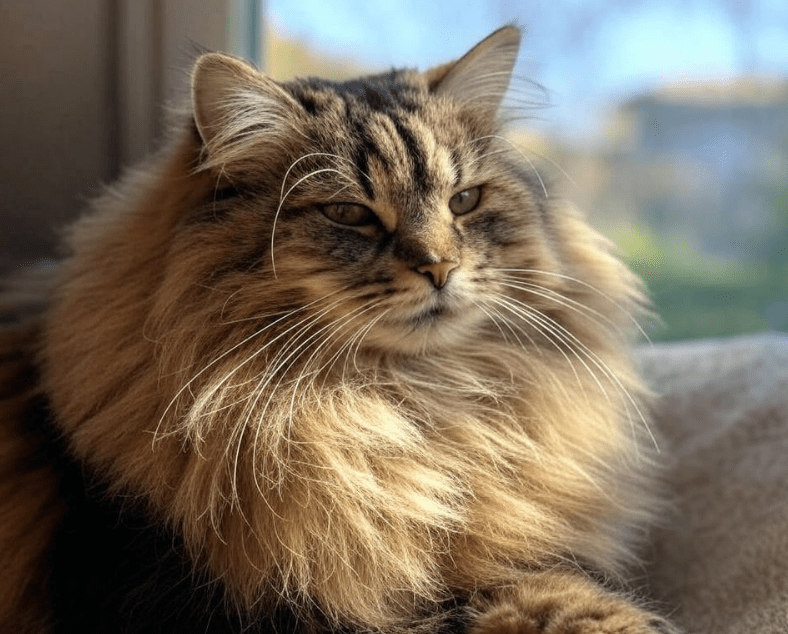
Keeping your Maine Coon’s long fur mat-free requires dedication, the right tools, and a consistent grooming routine. By understanding your cat’s unique coat, addressing mats promptly, and maintaining their overall health, you can ensure their fur remains a source of pride and beauty. With the tips and techniques outlined in this guide, you’ll be well-equipped to care for your Maine Coon’s luxurious coat, keeping it tangle-free and healthy for years to come.
Start implementing these strategies today, and enjoy the rewarding experience of bonding with your Maine Coon through grooming. A mat-free coat not only enhances your cat’s appearance but also contributes to their comfort and well-being.

